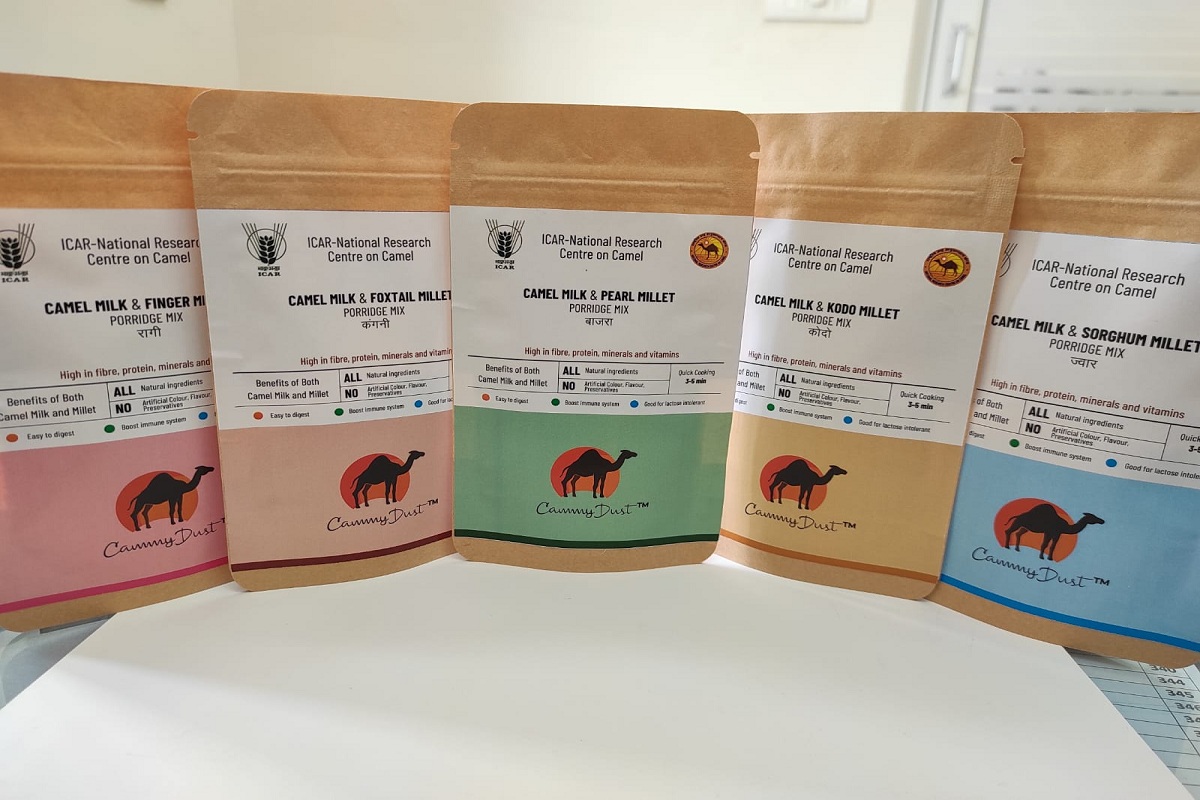After making ice cream, flavoured milk, gulab jamun and chocolate from camel milk, scientists at National Research Centre on Camel in Bikaner have prepared a ready-to-eat porridge by mixing various types of millet flours with camel-milk powder.
Various types of millets like Bajra, Jowar, Ragi, Kodo, and Kangni are grinded and mixed into the powder of camel milk to make ready to eat food which is packed in different pouches named Camel Milk & Pearl Millet, CM & Foxtail Millet and three others.
Advertisement
These can be cooked or served adding flavour with sugar, honey/syrup, fruits, dry nuts or cardamom to make a sweet cereal, or it can be mixed with spices, vegetables or meat to make a savory dish.
It can to be prepared in 3-5 minutes for children and adults with nutraceutical and therapeutic effect, carry all natural ingredients (no preservatives), good for lactose and gluten intolerance, and no need to add milk.
Approximately 50 gram porridge mixture is added to 300-400 ml water, when it is boiled for 3-5 minutes with occasional stirring to avoid sticking to the bottom. Salt, sweet or other additives can be as per the choice of user. The dry and powdered porridge mix pack can be stored for more than six months at room temperature or stored in the refrigerator at 4-8 degree c promises increased storage life.
In a direct interaction, the Director of NRCC Dr Artabandhu Sahoo told the Statesman today, “It is envisaged that a mixture of local millets and camel milk would prove more useful as a food as well as nutraceuticals for gut health”, the Director at NRCC Dr Artabandhu Sahoo told The Statesman today.
At the same time, it will encourage the farmers to produce water-resistant native millet (bajra) and also rear camel as ‘Dairy’ animal, which will enhance the revenue inflow and put a check in decline in camel population, Dr Sahoo said.
A mixture of freeze-dried camel milk and millet flour will be more useful to prepare ‘Raabri’, a fermented local product of Rajasthan and it will have additional nutraceutical and therapeutic properties, e.g. in the cure of diabetes, autism, food allergy, geriatric disorders (irritable bowel syndrome, constipation, gastro-enteritis), quoting the research paper the Director said.
A trademark on the product has been obtained from NRCC as ‘Cammy Dust’, and its price would be fixed after market procedures but it would be affordable, the Director hinted.
Camel is continuously losing its potential as ‘Ship of the Desert’ and the alternate use of female camel to produce milk seems to be a promising option due to nutraceutical/therapeutic benefits of camel milk in human health.
Besides its nutritional value, camel milk seems to be hypo-allergic due to absence of beta (b)-lactoglobulins and a lower concentration of lactose compared to milk from other species including goat. Camel milk contains both pre and probiotics that are useful for gastro-intestinal health, according to NRCC’s report to the parent organisation Indian Council of Agriculture Research (ICAR).
